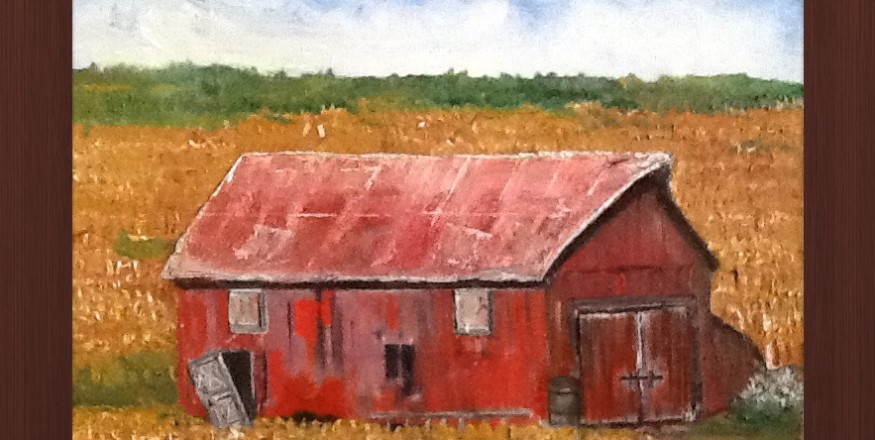Art review by Morton W. Sterling, critic-at-large for the Cincinnati Daily Herald
(IP) November 6, 2023
339Please respect copyright.PENANAAFraK51Hnt
This agrarian landscape, painted in oils, is deceptively simple, yet the folksy composition visually illustrates how elements are defined in context to other similarly measured variables by degrees, and how those variables are transformed by the state of the air and atmosphere at a particular time and place and by measurable periods during which actions, processes, or conditions exist or continue. The artist masterfully encapsulates this in his disguised symbolism found in his clever use of the six simple elements of sky, trees, field corn, barn, soil, and limestone.
Give short shrift, a moment of consideration, or a longer, deliberate contemplation, if you choose, to the various time structures and their cylindrical or continual influence that nature and man and painter have devised to encourage and produce a constantly changing, non-static world, as I insist the artist intended in Barn in Cornfield:
The sky obviously represents a brief moment; a few ticks of time; a constant changing and shifting of atmospheric conditions that produces different cloud configurations, colors spectrums, and degrees of wind velocity. In this painting, the artist chose the puffy, cirrus clouds of summer—creating dissonance with the crops ready to be harvested—summer is fleeting; winter is on its way.
The thin copse of leafy trees further perpetuates this feeling of anxiety dictated by the seasonal tension between summer and fall. It represents the autumn equinox—the dividing line between the past and the present. The seasons collide in a panache of the conflicting hues of saturated blues and greens versus earthy siennas and ochres.
The cornfield is surely an allegory of circular time as measured in 365 days; of life measured in years, perhaps. From seed to sprout; from strong and erect stalks to bent and brittled ones, from winter-planning until autumn-harvesting, the crops are nurtured, grow and die. It is a reflection of the life cycle for all of us. It is a cemetery, this artist’s rendition of a field of corn, meant subliminally, I believe, as Abstract Minimalist rows of tombstones.
The barn–an ode to Americana measured in decades–represents longevity and soundness; yet it, too, succumbs to the audacity of time. The natural weathering process of wood is a combination of chemical, mechanical, biological and light-induced changes, all of which occur simultaneously and affect each other. The artist shows the structure in the later stage of life: some of the gray, trying to be hidden, bleeding through splotches of fresh cardinal here and there, wonderfully used as visual focal points. The rusty silver of a tin roof; the door off its hinges–all decaying signs of mortality. The trash pile, all the mental and material junk we accumulate in life. The blackness inside, a peek at death.
Yet, the artist offers us hope, in his ground of underlying soil, formed when organic matter has accumulated and colloids are washed downward, leaving deposits of clay, humus, iron oxide, carbonate, and gypsum in their wake. Soil represents the continuation of life which is measured in centuries. This is alluded to by the graveyard allegory. Ashes to ashes. Yet a rebirth, as poignantly depicted here by the rooted cornfield in all its profound living glory.
I’m conjectoring that the artist’s barn is built on a foundation of limestone, sedimentary rock that contains fossils and gives clues about what the environment was like here millions of years ago, a shallow sea, completing the geologic timeline.
Barn in Cornfield therefore, is more than a graphic representation of a farm out-building standing sentinel amongst a field of ready-for-the-harvest crops. It is a stratum of time--measured in fleeting moments, days, months, seasons, millennia and epochs in this, our physical matter reality. Kudos to this magnificent oil-on-canvas time capsule currently on exhibition at the Cincy Art Center until May 15th!
ns 15.158.61.4da2





















